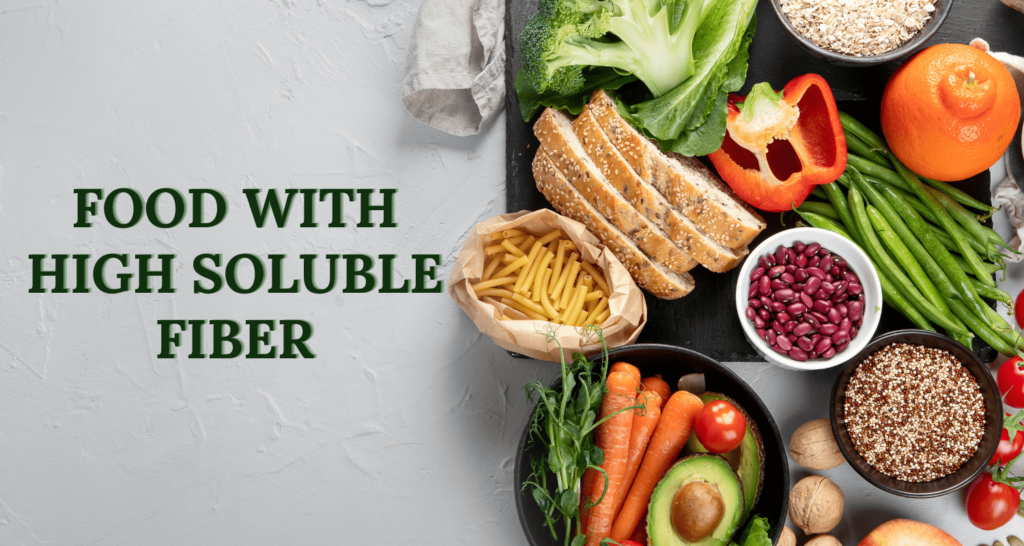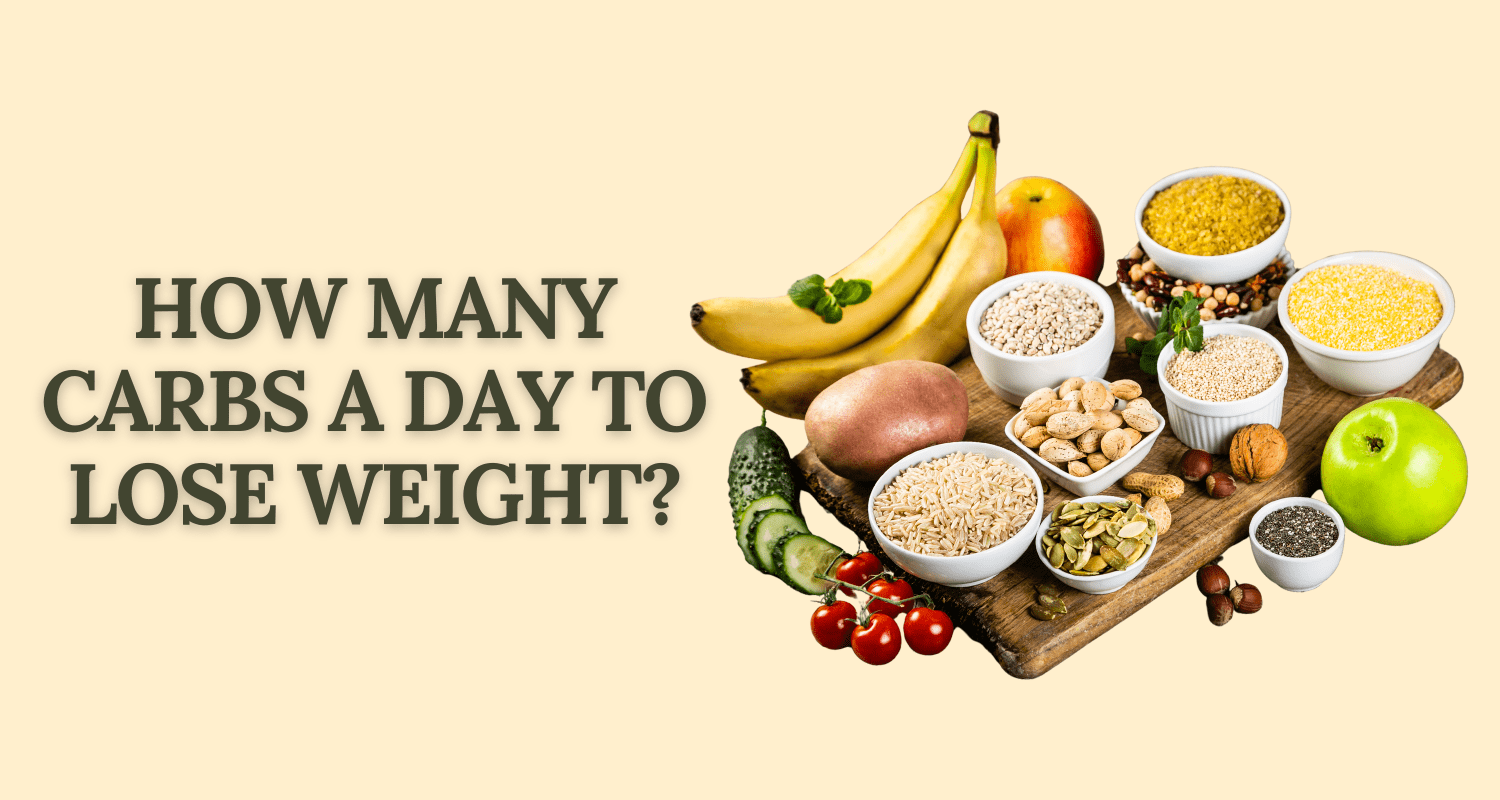Imagine a nutrient that slows down sugar absorption, lowers cholesterol, and keeps you full longer. This nutrient is none other than soluble fiber. Even though we know fiber aids digestion, just 7% of Americans get enough daily fiber.
This big gap shows we need to pay more attention to foods with high soluble fiber. These foods are crucial for better digestion and fighting diseases.
Today, our meals do more than just fill us up; they’re a chance to boost our health. Adding foods with high soluble fiber to our diet is a simple but powerful step toward better health. Our guide will show you the best foods with high soluble fiber. You can easily add them to your meals every day.
Let’s delve into foods with high soluble fiber.
Key Takeaways
- The enormous health benefits of soluble fiber include improved digestion, regulated blood sugar, and lowered cholesterol levels.
- Foods with high soluble fiber are not just beneficial; they’re a necessary component of a well-rounded diet.
- A majority of Americans consume far less dietary fiber than recommended, making it critical to focus on increasing intake through fiber-rich foods.
- Incorporating the best foods with high soluble fiber into one’s diet can help prevent numerous health conditions.
- The guide provides actionable information on how to enrich one’s diet with foods with high soluble fiber.
Understanding Soluble Fiber and Its Health Benefits
Let’s talk about soluble dietary fiber and why it’s important for us. Soluble fiber dissolves in water, turning into a gel in our guts. This property makes it useful for our health and a must-have in our meals.
What is Soluble Fiber?
Soluble fiber is found in foods like oats, beans, and fruits. It’s different from the kind of fiber that just helps you go to the bathroom. Instead, it dissolves and thickens, slowing down how fast we digest food. This keeps us feeling full longer and helps us soak up nutrients better.
Key Health Benefits of Soluble Fiber
The perks of soluble fiber go way beyond digestion. Research shows it cuts down bad cholesterol and keeps blood sugar steady. Lowering the risk of heart issues and type 2 diabetes comes with these effects. Plus, it helps control weight and reduce hunger, making it great for dieting.
Role of Soluble Fiber in Digestive Health
In the world of gut health, soluble fiber is key. It bulks up poop and helps avoid constipation, making bathroom trips smoother. It also feeds good bacteria in our large intestine. This helps keep our gut healthy, boosts our immune system, and lowers inflammation.
Foods with High Soluble Fiber
Exploring foods high in soluble fiber is key to a healthy diet. We’ve listed the top options to boost your fiber every day. These foods are rich in soluble fiber and easy to find, making them perfect for your meals.
- Oats – A go-to breakfast that’s full of soluble fiber.
- Black beans – High in both protein and fiber, ideal for soups and salads.
- Brussels sprouts – A nutrient-packed vegetable with plenty of fiber.
- Avocados – Full of healthy fats and fiber, they fit in many recipes.
- Sweet potatoes – They offer fiber and beta-carotene, making them super healthy.
Adding these foods with high soluble fiber to your meals aids in meeting fiber needs. They’re recommended by nutrition guides, so they’re safe and beneficial for upping your fiber.
There are many choices, from grains to legumes and veggies. You can mix these soluble fiber rich foods into main dishes, snacks, or smoothies. This will make your meals more nutritious.
The Importance of Soluble Fiber in a Balanced Diet
Eating right means choosing good foods and getting all the necessary nutrients. This includes fiber. Soluble fiber is important for our health. It helps our digestion and controls cholesterol.
We need to know how to add soluble fiber to our meals. This makes our diet better and keeps us healthy.
Integrating Soluble Fiber into Daily Meals
Adding more soluble fiber to your meals is easy. Include foods like oats, apples, carrots, and beans. These foods are rich in soluble fiber. They make meals more filling and nutritious.
- Start your day with oatmeal or a high-fiber cereal.
- Include fruits or vegetables as a part of every meal.
- Choose whole grains over refined ones.
Recommended Daily Intake of Soluble Fiber
Experts suggest different amounts of soluble fiber for men and women. Women should get about 25 grams a day. Men should aim for around 38 grams. But, this might change based on your health and needs.
Balancing Soluble and Insoluble Fiber
For a healthy diet, you need both soluble and insoluble fiber. Soluble fiber slows down digestion and lowers cholesterol. Insoluble fiber keeps your bowels moving and healthy.
- Consume a variety of fiber sources daily.
- Monitor your body’s response to different types of fiber.
- Adjust your fiber intake gradually to permit your body to adapt.
Soluble Fiber Rich Foods and Meal Planning
Adding high-fiber foods to everyday meals boosts health and can taste great. This section will show how to create soluble fiber meal plans for every meal. It includes popular fiber-rich foods and some tasty recipes high in soluble fiber.
Building a High Soluble Fiber Meal Plan
To start meal planning with high fiber foods, learn about soluble fiber sources. Include oats, beans, lentils, and fruits and vegetables in your meals to increase fiber.
Here are ways to balance these foods throughout the day:
- Breakfast: Try oatmeal or smoothies with bananas and apples.
- Lunch: A quinoa salad with beans or a veggie soup with legumes is great.
- Dinner: Eat steamed veggies, black beans, or a lentil stew.
- Snacks: For a fiber boost, go for almonds, chia seed pudding, or pear and apple slices.
Soluble Fiber Content in Popular Foods
Knowing the soluble fiber in common foods helps with smart shopping. Barley, carrots, and psyllium are full of soluble fiber. Eating these regularly makes your soluble fiber meal plans varied and fun.
Easy Recipes High in Soluble Fiber
Focusing on recipes high in soluble fiber keeps high-fiber meal planning exciting.
Try these simple recipes:
- Barley and Mushroom Risotto: A creamy dish that’s full of fiber.
- Chickpea and Spinach Curry: It’s hearty, tasty, and rich in fiber.
- Apple Cinnamon Baked Oatmeal: Ideal for a cozy breakfast or snack.
These recipes add a lot of fiber to your diet and make meals fun. Adding them to your routine ensures a diet rich in soluble fiber benefits.
Differences Between Soluble and Insoluble Fiber
Knowing the differences between soluble vs. insoluble fiber helps us understand their impact on digestion and health. Both are important for a healthy diet. Yet, they work differently in our bodies.
Defining Soluble and Insoluble Fiber
Soluble fiber turns into a gel when it mixes with water. You can find it in oats, nuts, beans, and fruits like apples and blueberries. Insoluble fiber, however, doesn’t dissolve in water. It keeps its form in the digestive system. Foods like wheat bran, vegetables, and whole grains are good sources.
Unique Benefits of Each Fiber Type
Soluble fiber can help control cholesterol and blood sugar. It forms a gel in water, slowing digestion. This is crucial for managing diabetes or high cholesterol.
Insoluble fiber helps move food through the digestive system. It prevents constipation by making stool bulkier.
Adding both dietary fiber types to your diet is key for keeping your digestive system healthy. It also helps prevent diseases like diabetes, heart disease, and colon cancer. The difference between soluble vs. insoluble fiber shows why it’s important to eat various fiber-rich foods.
High Fiber Foods List for Healthy Snacking
Snacking can be good if you choose wisely. The right snacks can help you meet your daily nutrition goals. Let’s explore the world of high fiber snacks. They’re great for staying healthy, even when you’re super busy.
Fiber-packed Snacks for On-the-Go
- Almonds and other nuts offer lots of fiber, healthy fats, and protein.
- Popcorn is a tasty, low-cal snack. It’s full of soluble fiber, especially if it’s not loaded with salt or butter.
- Fresh fruits like apples and bananas are easy to take with you. They are full of fiber and nutrients.
- Whole grain crackers or rice cakes can be great with avocado or hummus. They give you an extra fiber boost.
Smart Snacking Tips for Increased Fiber Intake
Adding fiber-packed snacks to your meals needs some planning but is very beneficial. Here are some tips to improve your snacking:
- Choose raw veggies like carrots, bell peppers, or cucumbers. They’re crunchy, fresh, and loaded with fiber.
- Snack on small amounts of dried fruits such as figs or apricots. They offer both sweetness and fiber.
- Find granola or snack bars that use whole grains or nuts. This ensures they give more than just calories.
- Put chia seeds or flaxseeds in your yogurt or smoothies. It’s an easy way to add nutrients and soluble fiber snacks.
Smart snacking means choosing options that fit your life and make you healthier with every bite. High fiber snacks are handy and keep you satisfied longer. They help with weight control and make your digestive system work better.
Selecting the Best Foods for Soluble Fiber
Finding the best foods for soluble fiber is crucial for a healthy diet. Soluble fiber helps with digestion, blood sugar control, and lowering cholesterol. Making smart choices for foods high in soluble fiber is important.
Choosing fiber-rich foods can be tricky. Knowing which ones are most beneficial and match your dietary needs is key.
Here are some tips to consider:
- Nutritional Balance: Opt for foods that offer both fiber and essential nutrients. Berries, citrus fruits, and oatmeal are perfect choices.
- Processing Level: Foods with less processing keep more fiber. Choose whole grains and fresh fruits over processed ones.
- Dietary Restrictions: Adjust your fiber choices to any health conditions or dietary limits. Look for gluten-free or low-sugar options if needed.
To add these fiber-rich foods to your diet smoothly, try these tips:
- Begin your day with a high-fiber breakfast like oats to boost digestion and energy.
- Add legumes like lentils to your meals for both fiber and protein.
- Snack on fiber-rich foods like almonds or apples throughout the day.
Selecting the best foods for soluble fiber leads to a healthy lifestyle. It makes your food choices both sustainable and beneficial. Aiming to improve digestion, lower cholesterol, or manage weight, fiber-rich food choices help. Remember, tailoring your choices makes your meals enjoyable and health-boosting.
Variety of Sources of Soluble Fiber
Eating sources of soluble fiber is very important for our health. It helps our digestion and keeps us feeling good. Fruits, veggies, and legumes are the best places to find it.
Soluble Fiber in Fruits, Vegetables, and Legumes
Looking at soluble fiber in fruits, apples, oranges, and pears is great. They give you vitamins, antioxidants, and lots of soluble fiber. They’re perfect for any healthy diet.
Soluble fiber in vegetables is plentiful in carrots, broccoli, and sweet potatoes. These veggies not only taste great but also help you get the fiber you need every day.
- Apples
- Oranges
- Pears
- Carrots
- Broccoli
- Sweet potatoes
Comparing Soluble Fiber Content in Food
Knowing how much soluble fiber is in different foods helps with meal planning. Beans, lentils, and peas have a lot of soluble fiber. Comparing them helps you eat what’s best for your health and taste.
- Beans: Rich in protein and fiber, ideal for heart health.
- Lentils: Quick to cook and versatile in dishes, high in soluble fiber.
- Peas: Add bulk to meals, a good source of fiber, and plant-based protein.
Nutritional Profiles: Soluble Fiber Content in Food
Looking at soluble fiber in nutrition is key. We should all focus on nutrient-dense fiber foods. These foods make our diets better and help our digestive system.
Highlighting Nutrient-Dense, Fiber-Rich Foods
Foods high in soluble fiber offer more than fiber. They are filled with nutrients that boost health. Think of apples, bananas, carrots, broccoli, lentils, and chickpeas.
The soluble fiber content in food like this supports your gut health. It also helps control your sugar levels and can lower your cholesterol.
Understanding Soluble Dietary Fiber on Food Labels
Knowing how to read food labels for fiber helps you make smart food choices. Labels show both soluble and insoluble fiber amounts. This lets you know what you’re eating.
Look for labels that mention ‘soluble fiber’ in the fiber section. Aim for foods that help you meet the daily fiber need of 25 to 38 grams.
- Choose products with ‘whole grains’ listed as the first ingredient
- Be cautious of foods labeled ‘enriched’ as they often have lower fiber contents
- Use the per serving fiber content to compare similar products effectively
Nutrient-dense fiber foods are key to a good diet. By reading labels right, people can up their nutrient game. This leads to enjoying the perks of a diet rich in fiber.
Conclusion
We’ve learned a lot about foods with high soluble fiber. Adding them to your daily meals can boost your digestion, control cholesterol, and stabilize sugar levels. Foods like oats, beans, apples, and Brussels sprouts are great choices. These foods are not just healthy; they are key to a balanced diet.
Soluble fiber is more than a nutrient; it’s a key to good health. By adding fibrous foods to your meals and snacks, you take a big step towards better health. You now know how to pick the right foods when shopping. This knowledge will help you make smarter, healthier food choices.
But, remember, learning about healthy eating doesn’t stop here. Each person needs a diet that fits their unique health needs. Keep exploring healthy eating and talk to experts to get advice that’s right for you. By adjusting your diet, you’re on your way to a healthier, happier life.
FAQs
What food has the highest soluble fiber?
Foods like oats, beans, lentils, and psyllium husk are among the highest sources of soluble fiber.
How can I get 10 grams of soluble fiber a day?
Include foods like oatmeal (1 cup cooked = 2 grams), beans (½ cup cooked = 1-2 grams), fruits like oranges (1 medium = 2 grams), and vegetables like Brussels sprouts (½ cup cooked = 2 grams) in your daily diet.
Are bananas high in soluble fiber?
Yes, bananas are a good source of soluble fiber, with about 1-2 grams of soluble fiber per medium-sized banana.
Does soluble fiber cure IBS?
Soluble fiber can help manage symptoms of irritable bowel syndrome (IBS) by promoting healthy digestion and reducing constipation, but it is not a cure.
Are eggs high in soluble fiber?
No, eggs are not a significant source of soluble fiber. They primarily contain protein and fat.
Is rice high in soluble fiber?
No, rice (both white and brown) is not considered high in soluble fiber.
What are the foods with high soluble fiber?
Foods rich in soluble fiber include oats, barley, beans, lentils, apples, oranges, pears, strawberries, carrots, and Brussels sprouts.
Disclaimer: This content, including advice, provides generic information only. It is not a substitute for a qualified medical opinion. Always consult a specialist or your doctor for more information. Nutrition Cult does not claim responsibility for this information.




